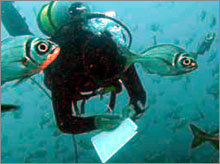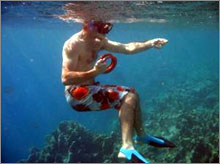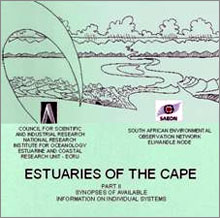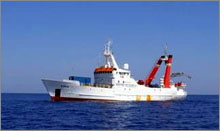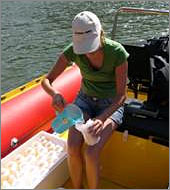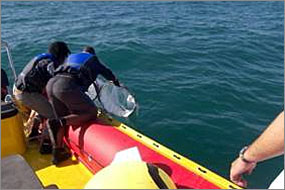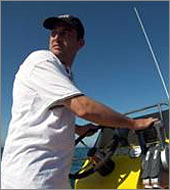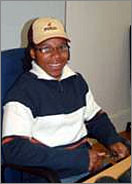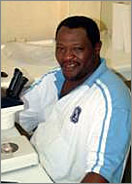SAEON Elwandle Node rides the crest of the wave
- By Dr Angus Paterson, Manager of the SAEON Elwandle Node
SAEON’s Elwandle Node is going from strength to strength with the following recent developments.
Marine Protected Areas
Marine Protected Areas (MPAs) form a cornerstone of South Africa’s national marine conservation efforts. MPAs are thus one of the thrust areas within the Elwandle Node and the research is headed up by Dr Albrecht (Ali) Götz.
Ali’s MPA monitoring and research programmes were previously primarily based in the Tsitsikamma and Greater Addo National Park MPAs. However, with the signing of a research contract with the WWF and SANParks, his research will now also extend into the Table Mountain MPA.
This new initiative is very exciting as it will not only involve scientific monitoring, but will also examine the potential for community-driven research and monitoring by recreational divers. Ali will undertake this pioneering research in conjunction with Mr Anthony Bernard, who will be doing his PhD dissertation on this topic. Anthony is a dynamic young man who has an impeccable academic record and a thirst for the outdoors.
The Node and SAEON as a whole look forward to great things coming from this dynamic duo.
|
Data products
Dr Kim Bernard and her Database Officer, Tanith Grant, are making great progress with two SAEON data initiatives:
Southern Ocean Database: The Southern Ocean Group, which is based at Rhodes University under the Directorship of Professor William Froneman, has been in existence since the 1970s and has significant holdings of Southern Ocean data. In a collaborative effort between the Egagasini[1] and Elwandle nodes and the Southern Ocean Group, all these data holdings are being digitised, collated and put into a database. With the Southern Ocean being regarded as an ideal region to study Global Climate Change, this project will surely pay dividends in the long term.
South African Estuaries Database: South Africa is blessed with over 200 estuaries and much of our coastal economy is based on the sound management of these systems. At present the key custodians of these systems, the Department of Environmental Affairs and Tourism (DEAT) and the Department of Water Affairs and Forestry (DWAF), do not have a national database on estuaries.
Since the last quarter of 2007, Kim and Tanith have being laying the groundwork for developing just such a system. They have had meetings with a range of stakeholders, including scientists, managers and authorities, and they will be hosting a workshop for National Authorities in Grahamstown in March. The meeting should allow for any overlap or duplication in the different agencies’ endeavours to be ironed out and it is hoped that by the end of 2008 a Phase 1 product will be available.
For the estuarine community, Tanith has prepared a little appetiser and has digitised the CSIR’s Green report series on Cape Estuaries, which is now available on CD. If you would like a copy, please email Tanith on t.grant@ru.ac.za.
|
African Coelacanth Ecosystem Project (ACEP)
One of the Elwandle Node’s major recent highlights is its future involvement with the African Coelacanth Ecosystem Project (ACEP). ACEP is a flagship programme of the South African Institute for Aquatic Biodiversity (SAIAB), which also hosts the SAEON Elwandle Node. The first phase of ACEP was completed in 2006 with phase two being launched in 2007. The five-year programme aims to significantly boost marine research on the east coast of South Africa and to contribute to the Agulhas Somali Current Large Marine Ecosystem (ASCLME) programme, which is a major GEF-funded international project.
ACEP’s second phase will build on the first, but will have a different funding and management structure. This new structure will involve:
- A national call for research proposals on coelacanths and the ecosystems in which they live, which will be funded by the National Research Foundation (NRF). The research call selection process will be completed by April 2008, with the programme winding up at the end of 2011.
- The provision of a research platform by Marine and Coastal Management who are key partners in the programme.
- Management and co-ordination through the Elwandle Node.
The Elwandle Node is regarded as the ideal place for the management of ACEP, as one of SAEON’s key mandates is inter-institutional research collaboration. In order for the Node to take on these additional tasks, additional staff members have been recruited and changes made within the Node. Dr Paterson, the Node Manager, will now manage both programmes, but will be ably supported by Dr Kim Bernard, who will take on more responsibilities within SAEON, and Dr Tommy Bornman, who will be the ACEP co-ordinator. Tommy hails from the Nelson Mandela Metropolitan University and will be joining the team in February 2008.
|
From planning to doing
One of the challenges of starting a new organisation from scratch is the total absence of a collective institutional memory. Basically everything the Node does is for the first time, which has its challenges in terms of getting it right, quality control and management systems.
While the team selected are top notch and all have their own specialties, splicing a new player into a team is very different to starting off with a whole new team. While 2007 went very smoothly in terms of system design, student initiation, project planning, etc., the acid test for an organisation whose core mandate is to do coastal in situ measurement is to get out onto the water and collect data.
In October 2007, the Node had a watershed meeting where it was explained that summer was nearly upon us and it was action stations. Well, it is early February and the Node is well into its first full summer sampling season and appears to be on track to achieve all its goals.
|
Internship programmes
The SAEON Elwandle Node launched two internship programmes in January 2007, which have now reached the end of their first year, with both programmes being a tremendous success.
Transnet National Ports Authority (TNPA) Internship programme: This programme was fully funded by Transnet and involves the ports authority fully supporting a transformation programme aimed specifically at black South African scientists. The three MSc candidates, Luzuko Dali, Mandisa Rubuxa and Ntuthuko Masikane are progressing very well. We would like to thank both Leticia Greyling and Shadi Masokoane of the TNPA for their unwavering support of the programme.
|
Murray & Roberts Steel parataxonomy interns: This exciting internship, which targeted the physically disabled, has come to an end and has been such a success that all three candidates will be employed by SAEON in 2008 on a contract basis as part of the SAEON team. Lulama Poni, Lungisile (“Toyoyo”) Koliti and Kholekile (“Colley”) Mpako have turned out to be excellent lab technicians and play a pivotal role in the primary sorting of samples.
The foresight of Murray & Roberts in sponsoring the programme is greatly appreciated.
|
[1] SAEON’s marine offshore node


